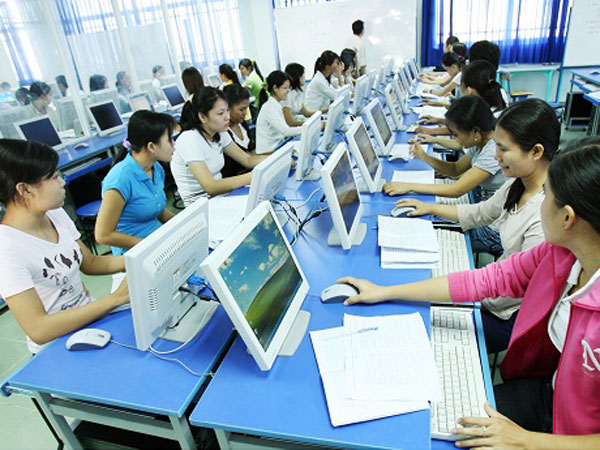
The report said Vietnamese aged 21-29 spent more time online than other groups, up to 27.2 hours per week, the fastest growth compared to other groups. Meanwhile, the group of people who are aged 40 and older used around 22.6 hours per week.
Nine out of ten or 91% of consumers in Vietnam owned smartphones, compared to 82% in 2014.
Besides, pay and cable TV (79%), laptops (78%) and desktop (75%) are the top devices owned by Vietnamese digital consumers. Levels of ownership for connected and smart TV and tablets remain high with more than 43%. The report said 31% of consumers often use the Internet on smartphones and 38% use laptops for Internet browsing.
The rapid up-take of connected devices, especially smartphones and tablets, is instrumental in media consumption shifting beyond traditional media formats such as broadcast TV, said Doan Duy Khoa, director of consumer insights research at Nielsen Vietnam.
Traditional TV continues to maintain its position and relevance in terms of content distribution platforms by far with 72% of consumers watching broadcast TV. However, alternative platforms are emerging.
Particularly, 78% of digital consumers reported watching TV content and movies via online platforms such as video-on-demand (VOD) and 67% of VOD subscribers claimed to stream VOD content every day. YouTube (97%), Facebook (81%) and nhaccuatui.com (56%) were known as the top three sources which consumers access for VOD content.
As for VOD content, 83% used laptops and desktops to watch, 63% smartphones, 55% TV screens and 34% tablets.
Movies dominate the type of VOD content being watched with 97% of Internet users watching movies online, followed by entertainment programs with 90%, news and current affairs from local TV networks with 89% and music shows and videos with 87%.
The report showed more than nine in ten Vietnamese were dual-screeners. Regardless of age, they loved to access some form of content through TV and online sources at the same time.
There were no single primary device for dual-screen as smartphones, desktops and laptops were all being used.
As device ownership increases, dual screening could become popular. There is likely increasing experimentation to access content through new devices like smartphones, tablets, and connected and smart TV, Khoa said.
According to the report, consumers in the Southeast Asia spent around three full work days on the Internet per week. Consumers in Singapore were the most digitally active, averaging 25.9 hours per week.
